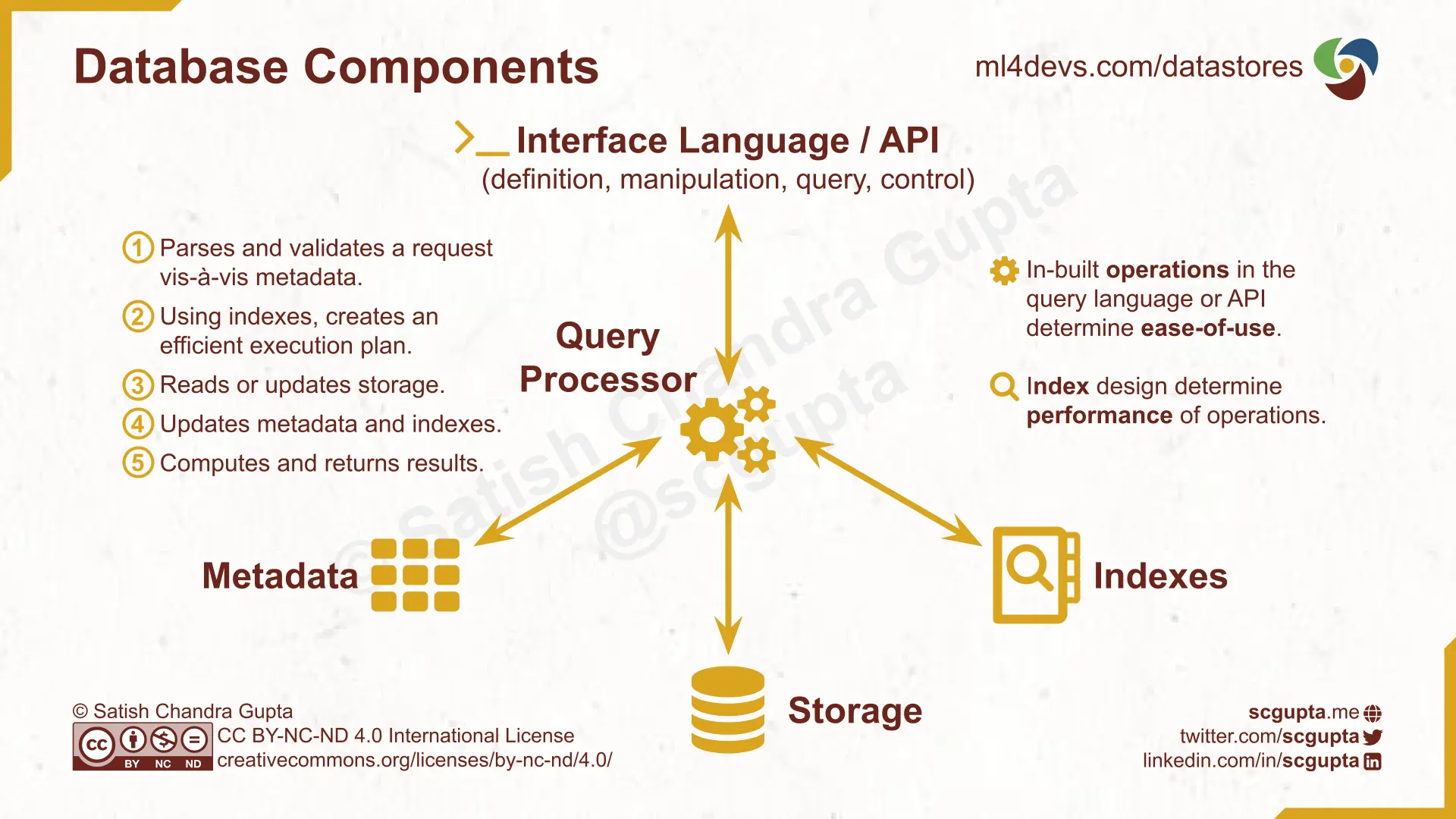
Bruno Garrofe
Software Engineer | LATAM

SQL vs. NoSQL Database: When to Use, How to Choose
Original content published on ML4Devs website on Jun 7, 2021
SQL vs. NoSQL Database: When to Use, How to Choose
How do you choose a database? Maybe, you assess whether the use case needs a Relational database. Depending on the answer, you pick your favorite SQL or NoSQL datastore, and make it work. It is a prudent tactic: a known devil is better than an unknown angel.
Picking the right datastore can simplify your application. A wrong choice can add friction. This article will help you expand your list of known devils with an in-depth overview of various datastores. It covers the following:
- Database parts that define a datastore’s characteristics.
- Datastores categorized by data types: deep dive into databases for unstructured, structured (SQL/tabular), and semi-structured (NoSQL) data.
- When to use NoSQL vs. SQL database.
- Differences between SQL and NoSQL databases.
- Datastores specialized for various NoSQL use cases.
- Decision Tree Cheatsheet to navigate the landscape of on-prem and on-cloud datastore choices.
Inside a Database
A high-level understanding of how databases work helps in evaluating alternatives. Databases have 5 components: interface, query processor, metadata, indexes, and storage:
- Interface Language or API: Each database defines a language or API to interact with it. It covers definition, manipulation, query, and control of data and transactions.
- Query Processor: The “CPU” of the database. Its job is to process incoming requests, perform needed actions, and return results.
- Storage: The disk or memory where the data is stored.
- Indexes: Data structures to quickly locate the queried data in the storage.
- Metadata: Meta-information of data, storage. and indexes (e.g., catalog, schema, size).
The Query Processor performs the following steps for each incoming request:
- Parses the request and validates it against the metadata.
- Creates an efficient execution plan that exploits the indexes.
- Reads or updates the storage.
- Updates metadata and indexes.
- Computes and returns results.
To determine a datastore matches your application needs, you need carefully examine:
- Operations supported by the interface. If the computations you require are in-built, you will need to write less code.
- Available indexes. It will determine how fast your queries run.
In the next sections, let’s examine operations and indexes in datastores for various data types.
